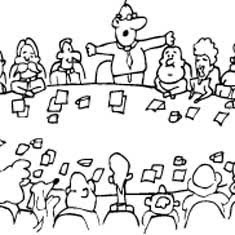— August 17, 2018

A lot of ink has been spilled about meetings – the bane of many office-dwellers’ existence. We have seen advice on how to run better meetings, how to hold fewer meetings, and how to make meetings as short as possible.
Meetings are often considered a necessary evil, one we all tolerate because somewhere deep down, we know that without meetings, our business could not function.
The truth is, there are good meetings and there are bad. And only a few things separate the good from the bad. So it is very easy to take good intentions and turn them into a bad meeting.
But there is one thing that is guaranteed to make or break any meeting.
Before we get to what that is, let me paint a picture for you…
Imagine your company is preparing to launch a new product this fall. Loads of time and money has been sunk into planning and developing this product, which everyone at the organization is fairly certain will be a big seller. And now the marketing team is planning the launch – how to get this product seen by the right audience.
Sounds like a good time for a meeting with the marketing decision makers, perhaps even someone from product and someone from sales to talk about the details of the product and how you plan to get as many out the door in the first month as possible.
So you organize a meeting. You invite all the right people. You send out a clear agenda. Everyone gets a chance to speak and the best ideas rise to the top.
The meeting ends, everyone feels good. This was no waste of time. It was a great conversation, enlightening even.
But a week goes by, and then another, and you find that you need to meet again. Or you need to chase down the team to figure out what happened to all that positive momentum.
The problem is, you didn’t clearly define the next steps and hold someone accountable.
Action Items
Every meeting needs to end with a review of the action items decided on during the meeting. Everyone at the meeting should know what those action items are, and who is responsible for completing them, and by when.
Ideally, someone’s job will be to write down these next steps and send them around to all the attendees. This will ensure there is no confusion, that everyone is on the same page. That way, you will know who is doing what, and when you can expect to see progress.
Without action items, the meeting is a waste of everyone’s time.
Business & Finance Articles on Business 2 Community
(24)





